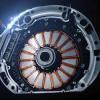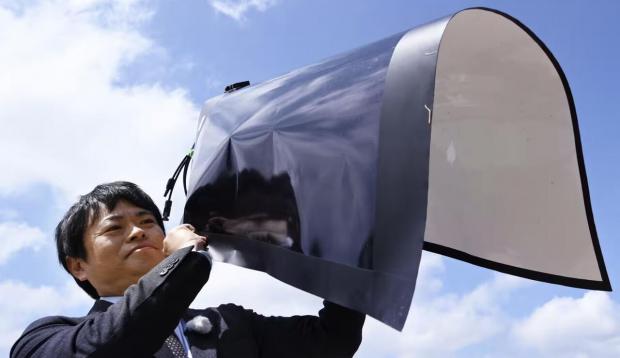
Breaking News
 Top news analysis, Green Tea miracles and a new interview with Col. Douglas Macgregor...
Top news analysis, Green Tea miracles and a new interview with Col. Douglas Macgregor...
 Cayenne pepper: The fiery superfood with a healing kick
Cayenne pepper: The fiery superfood with a healing kick
 Walmart Heiress Opens Medical School with a Focus on Preventative Medicine
Walmart Heiress Opens Medical School with a Focus on Preventative Medicine
 Not all probiotics are created equal – some help gut recovery, others harm
Not all probiotics are created equal – some help gut recovery, others harm
Top Tech News
 NASA's X-59 'quiet' supersonic jet rolls out for its 1st test drive (video)
NASA's X-59 'quiet' supersonic jet rolls out for its 1st test drive (video)
 Hypersonic SABRE engine reignited in Invictus Mach 5 spaceplane
Hypersonic SABRE engine reignited in Invictus Mach 5 spaceplane
 "World's most power dense" electric motor obliterates the field
"World's most power dense" electric motor obliterates the field
 The Wearables Trap: How the Government Plans to Monitor, Score, and Control You
The Wearables Trap: How the Government Plans to Monitor, Score, and Control You
 The Streetwing: a flying car for true adventure seekers
The Streetwing: a flying car for true adventure seekers
Magic mushrooms may hold the secret to longevity: Psilocybin extends lifespan by 57%...
 Unitree G1 vs Boston Dynamics Atlas vs Optimus Gen 2 Robot– Who Wins?
Unitree G1 vs Boston Dynamics Atlas vs Optimus Gen 2 Robot– Who Wins?
 LFP Battery Fire Safety: What You NEED to Know
LFP Battery Fire Safety: What You NEED to Know
 Final Summer Solar Panel Test: Bifacial Optimization. Save Money w/ These Results!
Final Summer Solar Panel Test: Bifacial Optimization. Save Money w/ These Results!
 MEDICAL MIRACLE IN JAPAN: Paralyzed Man Stands Again After Revolutionary Stem Cell Treatment!
MEDICAL MIRACLE IN JAPAN: Paralyzed Man Stands Again After Revolutionary Stem Cell Treatment!
Japan Bets On Super Thin, Film-Like Panels to Reclaim Solar Leadership At Expo 2025

More than 250 of these flexible, lightweight panels line the curved roof of the Yumeshima Transportation Terminal 1. Japan hopes this film-like solar tech will not only boost domestic renewable energy and reduce reliance on China, but also help it lead the next generation of solar innovation.
"It's like killing three birds with one stone," said Takayuki Taenaka of Japan's Ministry of Economy, Trade and Industry (METI).
Perovskite solar cells, discovered in 2009, are made from layers of chemicals just millimeters thick. Though still in early development, they rival traditional silicon-based panels in efficiency while being 20 times thinner and 10 times lighter, allowing installation on walls, rooftops, and even windows—places unsuitable for heavy panels.
"We believe this technology has the potential to beat the conventional silicon-based solar panels in terms of power generation efficiency," said Futoshi Kamiwaki, president of Sekisui Solarfilm, which developed the panels showcased at the Expo.
Japan, with limited flat land, leads major nations in solar capacity per km² but is running out of space. Installing perovskite cells on buildings could turn cities into vertical solar farms, helping Tokyo meet its 2040 goal: 29% of power from solar, up from under 10% today.
Sekisui plans to begin commercial shipments this year and start mass production by 2027. It's investing ¥310 billion ($2.1 billion) in a new 1GW manufacturing facility—half subsidized by the government. A further ¥5 billion is allocated to help local governments adopt the tech.
Japan aims to generate 20GW from next-gen solar by 2040, equivalent to 20 nuclear reactors.
Japan once held a 50% global share in solar panels around 2000, but by 2023, that dropped to under 1%, largely due to China's dominance. A METI report bluntly stated the government "lacked policies" to support industry growth and supply chains.
Today, China controls over 80% of all stages in the solar manufacturing process, thanks to its dominance in polysilicon.
"There is a risk in relying on one supplier," said Taenaka. "The fact that the main ingredient for perovskite photovoltaic (PV) is iodine, which we are a major producer of, scratches an important itch for us."
Nikkei writes that while Japanese firms focus on flexible perovskites, Chinese giants like Jinko Solar are developing tandem perovskite-silicon cells that reach up to 33.84% efficiency, compared to Sekisui's 15% in practice and 30% in labs.
"It's like cooking. Even if you have a frying pan and the right ingredients, the quality... depends on how good the chef is," said Yukihiro Kaneko of Panasonic.



